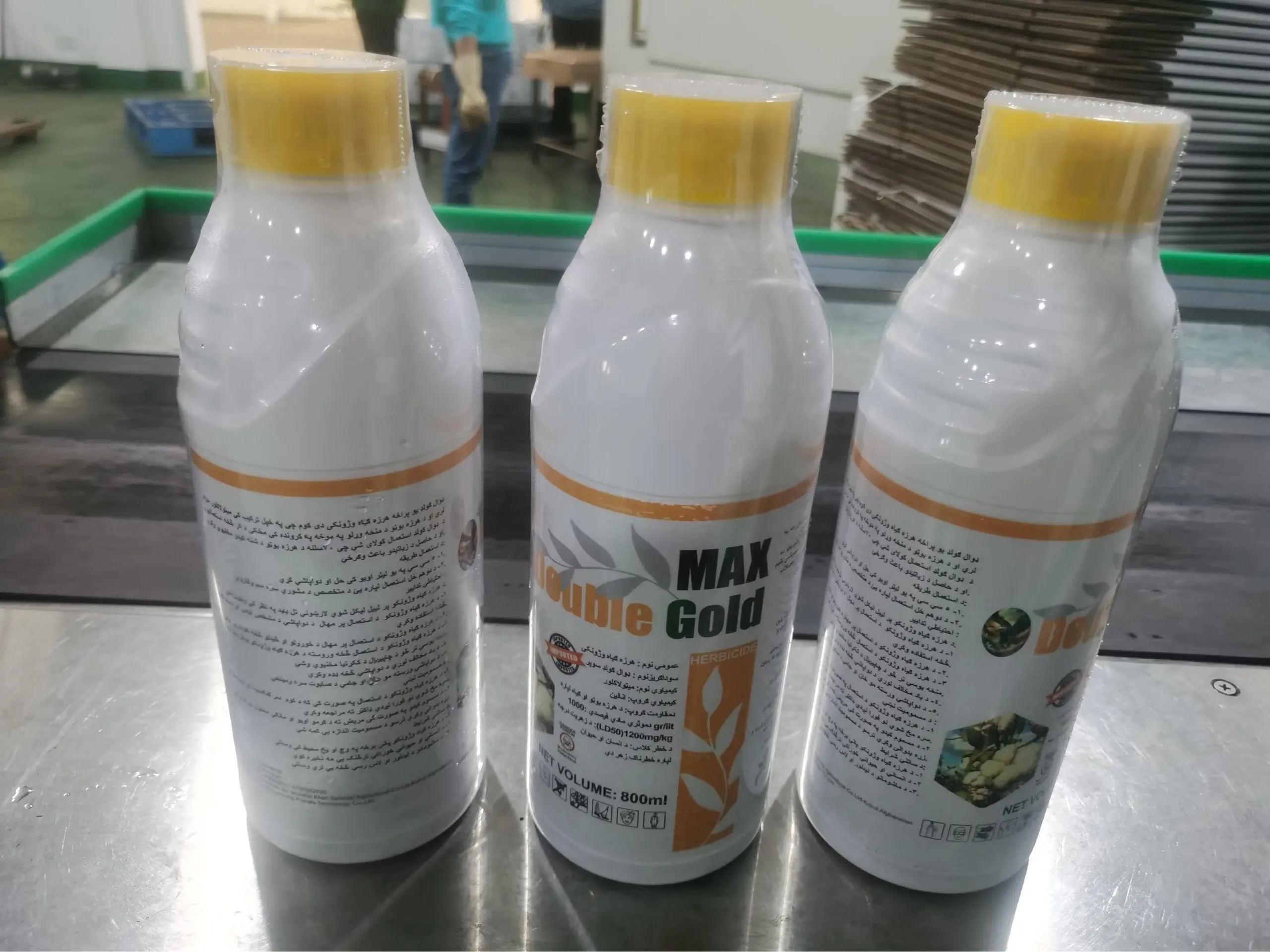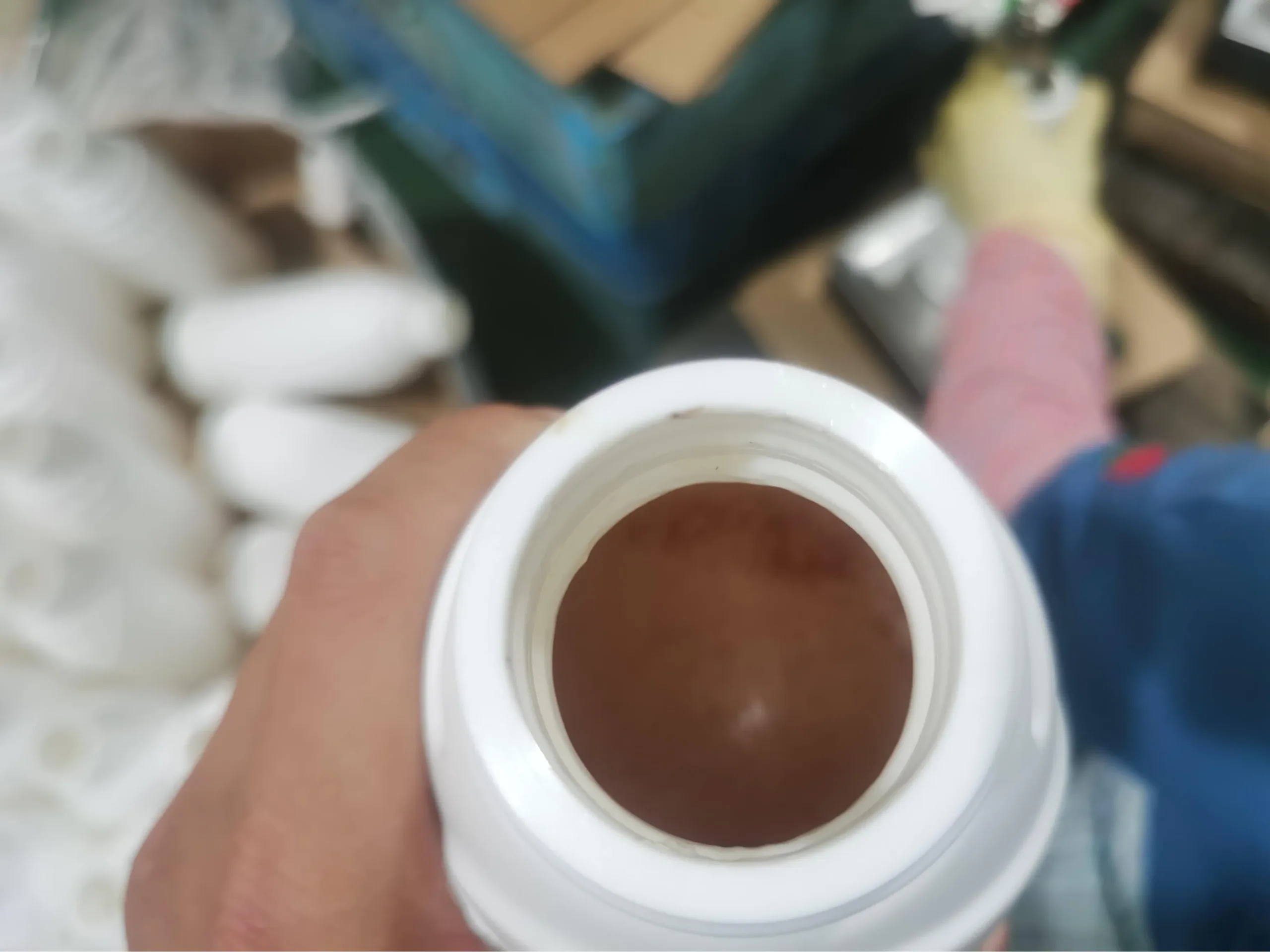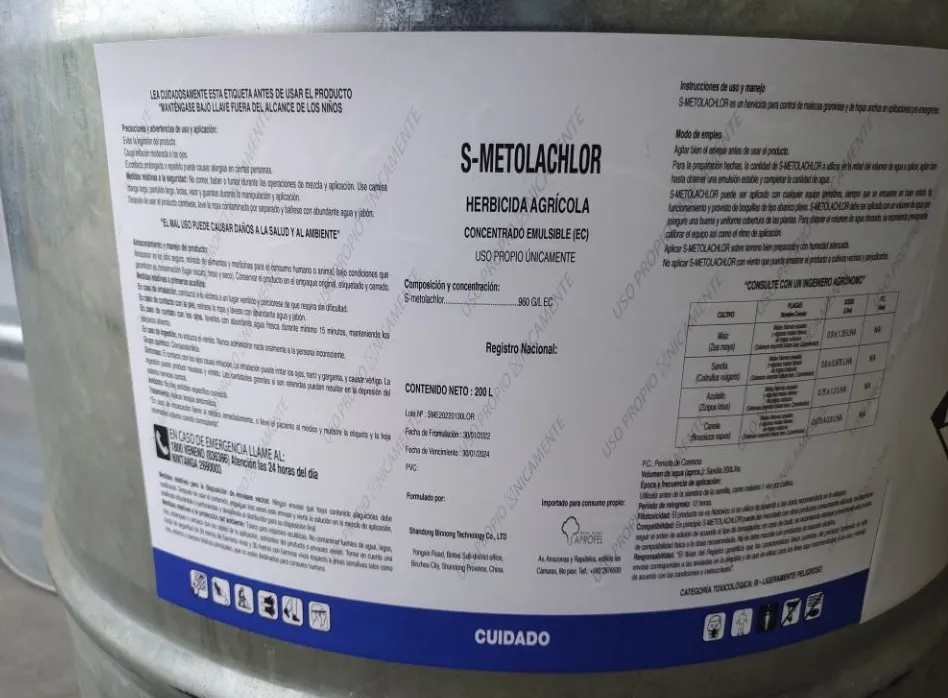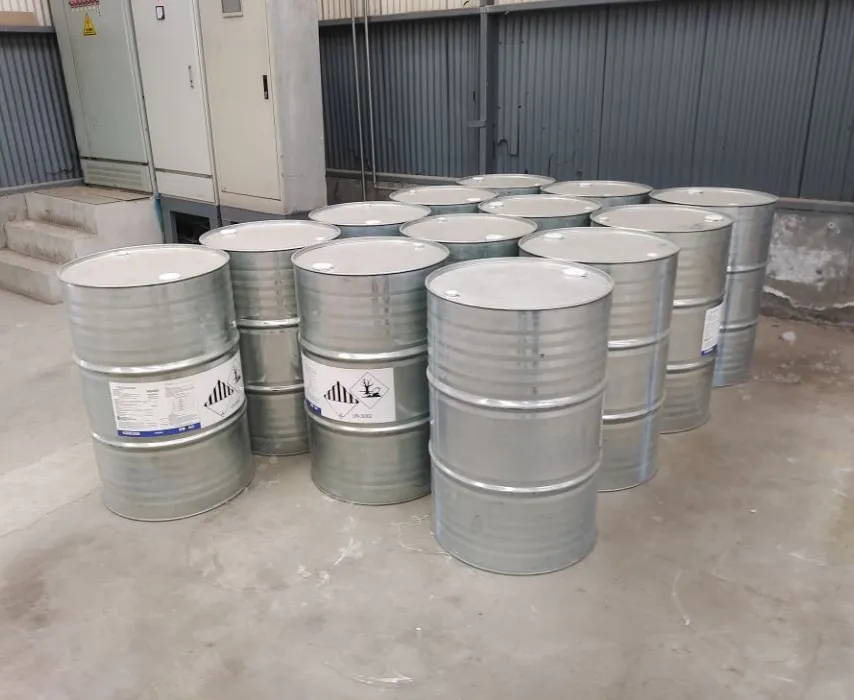S-Metolachlor vs Metolachlor
What’s the Difference Between Metolachlor and S-Metolachlor?
The key difference between metolachlor and S-metolachlor is their isomer composition, which directly affects their herbicidal activity and required application rate.
S-metolachlor is a more refined version of metolachlor, containing a higher percentage of the active S-enantiomer, which provides better weed control with lower dosage.
If you are comparing metolachlor vs S-metolachlor for your portfolio or advising your buyers, you need to understand how these two products are related yet distinctly different.
Metolachlor is a selective pre-emergent herbicide first introduced as a racemic mixture — this means it contains both the active S-enantiomer and the less active R-enantiomer. The S-enantiomer is primarily responsible for the weed control effect, while the R-form offers minimal activity.
Modern manufacturing and advanced purification methods allow the production of S-metolachlor, which is an enriched formulation with a significantly higher proportion of the active S-isomer — often around 88% or more. This means you or your customers can achieve the same or better weed control results with about 30–35% less active ingredient, compared to standard metolachlor.
If your buyer is used to applying metolachlor at 1,000 grams a.i./ha, they can often switch to S-metolachlor at around 700 grams a.i./ha for comparable results. This not only reduces the total chemical load but may also lower residual levels in the soil.
From a procurement standpoint, you need to explain to your downstream customers that this difference impacts cost per hectare, environmental residue profiles, and local regulatory approval. Many markets now prefer S-metolachlor due to its improved efficacy and sustainability profile — a factor that could strengthen your brand’s position as a responsible supplier.
By understanding the difference between metolachlor and S-metolachlor, you can better decide which product fits your buyers’ needs — whether they prioritize cost-effectiveness, regulatory compliance, or a cleaner label for export markets.
Why Choose S-Metolachlor Over Metolachlor?
You should choose S-metolachlor over metolachlor if you want stronger weed control with lower application rates and better environmental compliance.
Although S-metolachlor can be slightly more expensive upfront, its higher purity and increased efficacy often reduce your total cost per hectare.
When you compare S-metolachlor vs metolachlor, the main reason Importers and Distributors switch to S-metolachlor is its higher herbicidal activity and lower required dose, which translates into better performance and sustainability.
Key advantages of S-metolachlor:
- Improved efficacy: Because S-metolachlor contains a higher percentage of the active S-enantiomer, your growers achieve better weed suppression, especially for difficult annual grasses and some broadleaf weeds.
- Lower dosage: Your distributors can provide farmers with 25–35% less active ingredient per hectare, which means fewer drums to transport, store, or handle in the warehouse.
- Environmental benefits: Less chemical per hectare reduces residue levels and runoff, helping you stay compliant with tightening regulations in markets like the EU.
- Regulatory preference: Many authorities favor the S-isomer for new registrations, giving your brand owners and local sales agents an edge when registering or promoting “clean label” herbicides.
Cost perspective for importers and distributors:
While S-metolachlor may cost more per unit, your total cost per hectare can be similar or even lower because of the reduced dose and fewer repeat applications. This makes your pricing more competitive in volume-sensitive markets.
If your distributors supply growers planting corn, soybeans, or peanuts, they often choose S-metolachlor to tackle tough weeds with a lower dose — offering growers higher yield security while you strengthen your reputation as a trusted agrochemical importer or wholesale distributor.
Choosing S-metolachlor over metolachlor demonstrates that importers and distributors are committed to providing effective, modern weed control solutions that help brand owners and farm supply stores meet today’s sustainability standards.
Regulatory Compliance & Market Trends
S-metolachlor is increasingly favored over metolachlor in international markets due to stricter environmental regulations and improved safety profiles.
If you are an importer, brand owner, or regulatory consultant, you’ll find that many countries are shifting toward S-metolachlor-based formulations to meet modern residue, toxicology, and sustainability standards.
When evaluating metolachlor vs S-metolachlor from a regulatory and market-entry perspective, the distinction goes far beyond just field performance. S-metolachlor is not only more effective agronomically but also more acceptable under evolving global agrochemical policies.
Key market trends affecting importers and brand owners:
- Stricter residue limits (MRLs): Regulatory agencies in regions like the European Union and parts of South America are implementing tighter restrictions on herbicide residues in food crops. S-metolachlor’s lower usage rate helps exporters stay within these limits.
- Environmental impact: Metolachlor is flagged in some jurisdictions for potential groundwater contamination and persistence. S-metolachlor, being more active at lower doses, allows product formulators and brand owners to position their products as more eco-friendly.
- Registration preference: In many cases, only S-metolachlor is eligible for new registrations or re-registrations. Regulatory consultants handling dossier submissions know that demonstrating a safer toxicology profile is often the key to approval.
- Global sustainability labeling: International food companies increasingly demand “clean-label” chemical programs. S-metolachlor allows your product portfolio to align with these downstream supply chain requirements.
If you’re an importer supplying private-labeled herbicide products to African or Southeast Asian governments or development agencies, your buyers may specifically request “S-metolachlor” over standard metolachlor due to alignment with international donor requirements or prequalification criteria.
Make sure your technical documentation includes a clear isomer profile, COA showing S-isomer purity, updated SDS, and environmental behavior studies. These documents are not just compliance tools—they’re marketing assets that build trust with both regulators and end clients.
In summary, understanding the regulatory difference between metolachlor and S-metolachlor can directly impact your market access, brand perception, and long-term success as a supplier. By aligning your offering with preferred isomer-based formulations, you gain both technical credibility and a strategic edge.
OEM Supply & Custom Formulation Support
Whether you choose metolachlor or S-metolachlor, working with a reliable OEM partner ensures you get consistent quality, flexible packaging, and full regulatory support.
As an importer, distributor, or brand owner, this means you can expand your herbicide line with confidence — while offering your growers proven weed control solutions that meet local compliance standards.
If you’re an importer, agrochemical distributor, or private-label brand owner, you know that the real value of choosing between metolachlor vs S-metolachlor isn’t just the active ingredient — it’s how your supplier supports you with manufacturing, labeling, and documentation.
Why OEM & custom support matter for your business:
- Custom formulations: You may need different concentration levels or blends (e.g., metolachlor alone or mixed with atrazine) to fit your local weed spectrum and resistance concerns.
- Flexible packaging: From 1-liter retail packs to bulk 200-liter drums for large farms, your market may demand multiple SKUs. A reliable OEM manufacturer should adjust packaging sizes and designs to match your channel’s needs.
- Private labeling: Brand owners and distributors often require multi-language labels, customized usage instructions, or unique branding elements to meet local regulations and boost shelf appeal.
- Full regulatory file: You don’t just want a product; you want the COA, SDS, label drafts, and data sheets that help you get through customs, meet pesticide registration standards, and satisfy buyer audits.
How POMAIS helps importers and brand owners:
For example, if you need S-metolachlor 960 g/L EC for your premium portfolio and regular metolachlor for budget segments, we can run separate production lines to avoid cross-contamination, keep batches traceable, and support your documentation needs for both local and export markets.
We also help you adjust your formulations to align with local regulatory changes — whether you’re responding to new residue limits, stricter environmental impact scores, or simply repositioning your brand to stand out as a “cleaner” option.
Added value for your sales team:
When your team approaches growers or government tenders, you have a clear story: you’re not just selling a herbicide — you’re providing a high-quality, compliant solution with clear usage guidelines and sustainable positioning.
In short, the difference between metolachlor and S-metolachlor is one thing — but the difference between a generic supplier and an experienced OEM partner is what protects your business long term.
Need a quote?
If you’re planning your next herbicide order, don’t let the choice between metolachlor vs S-metolachlor slow you down.
Work with a manufacturer who understands not just the chemistry — but your market requirements, local registrations, and practical demands in the field.
At POMAIS, we help importers, distributors, and brand owners build strong portfolios with:
- Verified isomer profiles for maximum field performance.
- Flexible OEM production — from standard formulations to custom blends.
- Packaging options that match your growers’ real needs, from retail bottles to bulk drums.
- Complete regulatory documentation for smooth customs clearance and local approvals.
With us, you’re not just buying a product — you’re securing a reliable supply chain, market-ready branding, and expert support when new regulations change.
Get in touch today to request a competitive quote, check batch availability, or discuss your custom metolachlor and S-metolachlor needs.
What’s the Difference Between Metolachlor and S-Metolachlor?
The key difference between metolachlor and S-metolachlor is their isomer composition, which directly affects their herbicidal activity and required application rate.
S-metolachlor is a more refined version of metolachlor, containing a higher percentage of the active S-enantiomer, which provides better weed control with lower dosage.
If you are comparing metolachlor vs S-metolachlor for your portfolio or advising your buyers, you need to understand how these two products are related yet distinctly different.
Metolachlor is a selective pre-emergent herbicide first introduced as a racemic mixture — this means it contains both the active S-enantiomer and the less active R-enantiomer. The S-enantiomer is primarily responsible for the weed control effect, while the R-form offers minimal activity.
Modern manufacturing and advanced purification methods allow the production of S-metolachlor, which is an enriched formulation with a significantly higher proportion of the active S-isomer — often around 88% or more. This means you or your customers can achieve the same or better weed control results with about 30–35% less active ingredient, compared to standard metolachlor.
If your buyer is used to applying metolachlor at 1,000 grams a.i./ha, they can often switch to S-metolachlor at around 700 grams a.i./ha for comparable results. This not only reduces the total chemical load but may also lower residual levels in the soil.
From a procurement standpoint, you need to explain to your downstream customers that this difference impacts cost per hectare, environmental residue profiles, and local regulatory approval. Many markets now prefer S-metolachlor due to its improved efficacy and sustainability profile — a factor that could strengthen your brand’s position as a responsible supplier.
By understanding the difference between metolachlor and S-metolachlor, you can better decide which product fits your buyers’ needs — whether they prioritize cost-effectiveness, regulatory compliance, or a cleaner label for export markets.
Why Choose S-Metolachlor Over Metolachlor?
You should choose S-metolachlor over metolachlor if you want stronger weed control with lower application rates and better environmental compliance.
Although S-metolachlor can be slightly more expensive upfront, its higher purity and increased efficacy often reduce your total cost per hectare.
When you compare S-metolachlor vs metolachlor, the main reason Importers and Distributors switch to S-metolachlor is its higher herbicidal activity and lower required dose, which translates into better performance and sustainability.
Key advantages of S-metolachlor:
- Improved efficacy: Because S-metolachlor contains a higher percentage of the active S-enantiomer, your growers achieve better weed suppression, especially for difficult annual grasses and some broadleaf weeds.
- Lower dosage: Your distributors can provide farmers with 25–35% less active ingredient per hectare, which means fewer drums to transport, store, or handle in the warehouse.
- Environmental benefits: Less chemical per hectare reduces residue levels and runoff, helping you stay compliant with tightening regulations in markets like the EU.
- Regulatory preference: Many authorities favor the S-isomer for new registrations, giving your brand owners and local sales agents an edge when registering or promoting “clean label” herbicides.
Cost perspective for importers and distributors:
While S-metolachlor may cost more per unit, your total cost per hectare can be similar or even lower because of the reduced dose and fewer repeat applications. This makes your pricing more competitive in volume-sensitive markets.
If your distributors supply growers planting corn, soybeans, or peanuts, they often choose S-metolachlor to tackle tough weeds with a lower dose — offering growers higher yield security while you strengthen your reputation as a trusted agrochemical importer or wholesale distributor.
Choosing S-metolachlor over metolachlor demonstrates that importers and distributors are committed to providing effective, modern weed control solutions that help brand owners and farm supply stores meet today’s sustainability standards.
Regulatory Compliance & Market Trends
S-metolachlor is increasingly favored over metolachlor in international markets due to stricter environmental regulations and improved safety profiles.
If you are an importer, brand owner, or regulatory consultant, you’ll find that many countries are shifting toward S-metolachlor-based formulations to meet modern residue, toxicology, and sustainability standards.
When evaluating metolachlor vs S-metolachlor from a regulatory and market-entry perspective, the distinction goes far beyond just field performance. S-metolachlor is not only more effective agronomically but also more acceptable under evolving global agrochemical policies.
Key market trends affecting importers and brand owners:
- Stricter residue limits (MRLs): Regulatory agencies in regions like the European Union and parts of South America are implementing tighter restrictions on herbicide residues in food crops. S-metolachlor’s lower usage rate helps exporters stay within these limits.
- Environmental impact: Metolachlor is flagged in some jurisdictions for potential groundwater contamination and persistence. S-metolachlor, being more active at lower doses, allows product formulators and brand owners to position their products as more eco-friendly.
- Registration preference: In many cases, only S-metolachlor is eligible for new registrations or re-registrations. Regulatory consultants handling dossier submissions know that demonstrating a safer toxicology profile is often the key to approval.
- Global sustainability labeling: International food companies increasingly demand “clean-label” chemical programs. S-metolachlor allows your product portfolio to align with these downstream supply chain requirements.
If you’re an importer supplying private-labeled herbicide products to African or Southeast Asian governments or development agencies, your buyers may specifically request “S-metolachlor” over standard metolachlor due to alignment with international donor requirements or prequalification criteria.
Make sure your technical documentation includes a clear isomer profile, COA showing S-isomer purity, updated SDS, and environmental behavior studies. These documents are not just compliance tools—they’re marketing assets that build trust with both regulators and end clients.
In summary, understanding the regulatory difference between metolachlor and S-metolachlor can directly impact your market access, brand perception, and long-term success as a supplier. By aligning your offering with preferred isomer-based formulations, you gain both technical credibility and a strategic edge.
OEM Supply & Custom Formulation Support
Whether you choose metolachlor or S-metolachlor, working with a reliable OEM partner ensures you get consistent quality, flexible packaging, and full regulatory support.
As an importer, distributor, or brand owner, this means you can expand your herbicide line with confidence — while offering your growers proven weed control solutions that meet local compliance standards.
If you’re an importer, agrochemical distributor, or private-label brand owner, you know that the real value of choosing between metolachlor vs S-metolachlor isn’t just the active ingredient — it’s how your supplier supports you with manufacturing, labeling, and documentation.
Why OEM & custom support matter for your business:
- Custom formulations: You may need different concentration levels or blends (e.g., metolachlor alone or mixed with atrazine) to fit your local weed spectrum and resistance concerns.
- Flexible packaging: From 1-liter retail packs to bulk 200-liter drums for large farms, your market may demand multiple SKUs. A reliable OEM manufacturer should adjust packaging sizes and designs to match your channel’s needs.
- Private labeling: Brand owners and distributors often require multi-language labels, customized usage instructions, or unique branding elements to meet local regulations and boost shelf appeal.
- Full regulatory file: You don’t just want a product; you want the COA, SDS, label drafts, and data sheets that help you get through customs, meet pesticide registration standards, and satisfy buyer audits.
How POMAIS helps importers and brand owners:
For example, if you need S-metolachlor 960 g/L EC for your premium portfolio and regular metolachlor for budget segments, we can run separate production lines to avoid cross-contamination, keep batches traceable, and support your documentation needs for both local and export markets.
We also help you adjust your formulations to align with local regulatory changes — whether you’re responding to new residue limits, stricter environmental impact scores, or simply repositioning your brand to stand out as a “cleaner” option.
Added value for your sales team:
When your team approaches growers or government tenders, you have a clear story: you’re not just selling a herbicide — you’re providing a high-quality, compliant solution with clear usage guidelines and sustainable positioning.
In short, the difference between metolachlor and S-metolachlor is one thing — but the difference between a generic supplier and an experienced OEM partner is what protects your business long term.
Need a quote?
If you’re planning your next herbicide order, don’t let the choice between metolachlor vs S-metolachlor slow you down.
Work with a manufacturer who understands not just the chemistry — but your market requirements, local registrations, and practical demands in the field.
At POMAIS, we help importers, distributors, and brand owners build strong portfolios with:
- Verified isomer profiles for maximum field performance.
- Flexible OEM production — from standard formulations to custom blends.
- Packaging options that match your growers’ real needs, from retail bottles to bulk drums.
- Complete regulatory documentation for smooth customs clearance and local approvals.
With us, you’re not just buying a product — you’re securing a reliable supply chain, market-ready branding, and expert support when new regulations change.
Get in touch today to request a competitive quote, check batch availability, or discuss your custom metolachlor and S-metolachlor needs.






